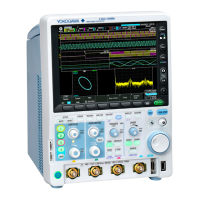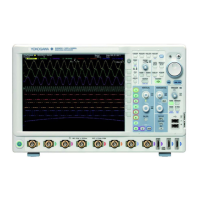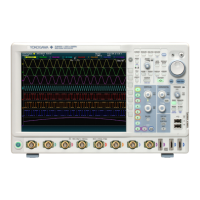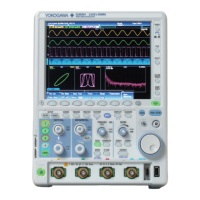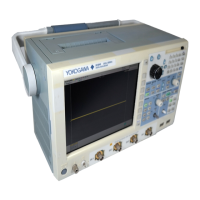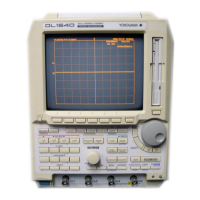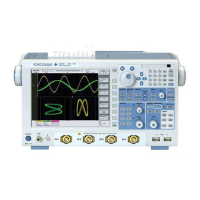21-2
IM DLM3054-01EN
TCP/IP(TCP/IP)
Configure the settings that the instrument needs to connect to a network.
DHCP
DHCP is a protocol that temporarily allocates settings that a PC needs to connect to the Internet.
To connect to a network that has a DHCP server, turn the DHCP setting on. When DHCP is turned on, the IP
address can be automatically obtained when the instrument is connected to a network. (You do not have to set it
manually.)
When DHCP is turned off, you must set the appropriate IP address, subnet mask, and default gateway for the
network.
DNS
DNS is a system used to associate Internet host names and domain names with IP addresses. Given AAA.
BBBBB.com, AAA is the host name and BBBBB.com is the domain name.
You can use host names and domain names to access the network instead of using IP addresses, which are just
numbers. The instrument allows you to specify the host by name, instead of by IP address.
Set the domain name and the DNS server address (0.0.0.0 by default). For details, consult your network
administrator.
DNS Servers (DNS Server1/DNS Server2)
You can specify up to two DNS server addresses: primary and secondary. If querying fails with the primary DNS
server, the secondary DNS server is automatically used to find the mapping of the host name and domain name
to the IP address.
Domain Suffixes (Domain Suffix1/Domain Suffix2)
The domain suffix is a piece of information that is automatically added when a query is made to a DNS server
using only a portion of the domain name. For example, if BBBBB.co.jp is registered as a domain suffix and a
query is made using “AAA,” the name “AAA.BBBBB.co.jp” is searched.
You can specify up to two domain suffixes: Domain Suffix1 and Domain Suffix 2.
You can use up to 30 characters. The characters that you can use are 0 to 9, A−Z, a−z, and dashes.
TCP/IP settings are applied when you press Set or when you turn on the instrument the next time.
21 Ethernet Communication (Network)

